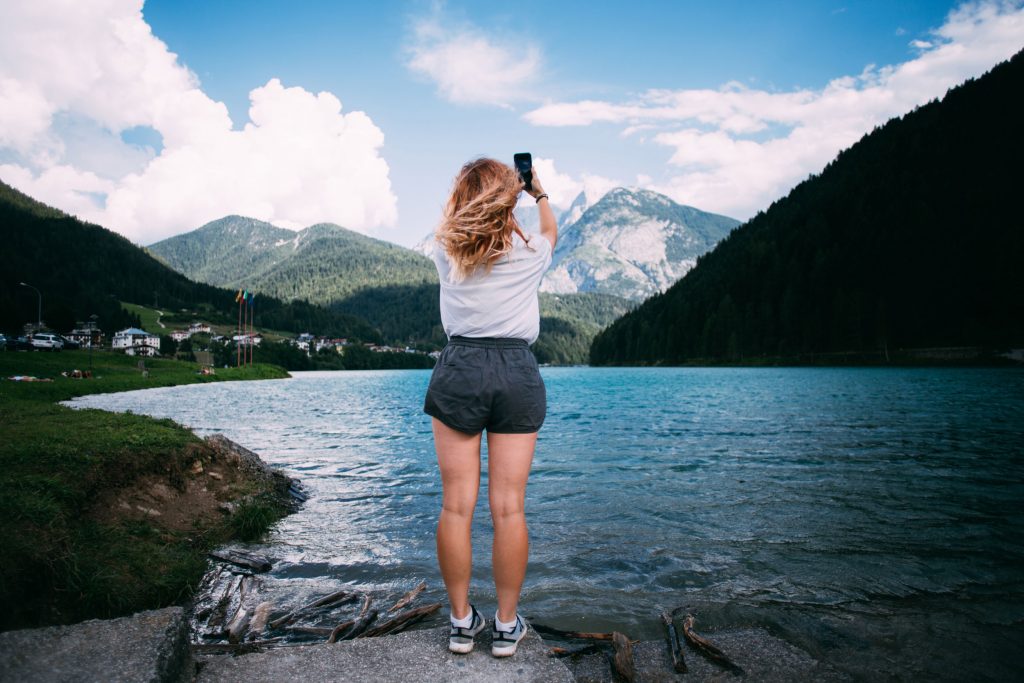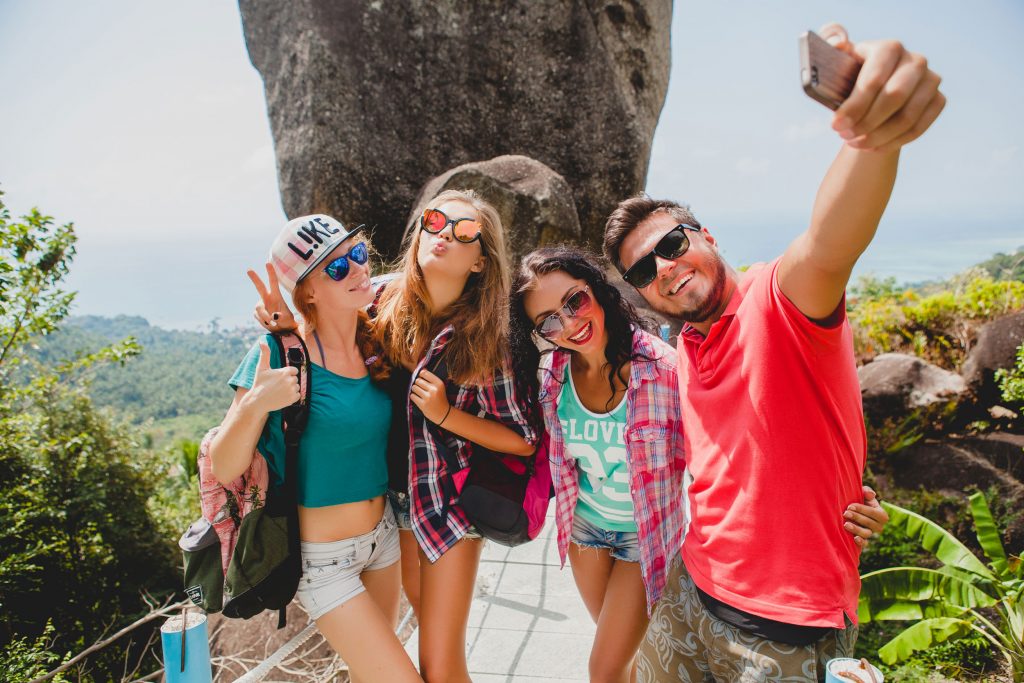It’s nearly impossible to open a magazine, read an article, or get through the day without hearing about Millennials. This section of the population, born roughly from 1980 to 2000, has grown up in an age pulsing with technology. They are complex, plugged in, and active players in adventure travel’s future. In fact, this demographic is so important as it relates to the industry that an entire educational session, “Consumer Research Perspectives: Tomorrow’s Adventure Traveler,” will address this issue at the upcoming Adventure Travel World Summit.
In an attempt to capture the elusive Millennial audience, an incredible body of research offers insights into their preferences, buying habits, and desires. According to the firm Millennial Marketing, American Millennials make up 21 percent of consumer discretionary purchases. A quarter are parents, and this demographic also has incredible influence over older generations.
Those working in tourism are wise to take note: Not only do Millennials wield an incredible amount of buying power, but they’re not afraid to spend it on travel. Half of all Millennials report taking four or more overnight trips a year, and 75 percent are interested in traveling abroad. Furthermore, according to Millennial Marketing, 69 percent of this demographic say they crave adventure.

“Millennials crave experiences. They are more likely than any other demographic to travel on the more adventurous tours, which is evident through the success of Geckos’ tours to Everest Base Camp, Taj Mahal, homestays — staying with a local family — in Peru and Thailand, and safaris in Africa,” said Leigh Barnes, Geckos Adventures and Intrepid Group director. In fact, the number of Millennials booking homestays in Peru through Geckos Adventures has increased by about 13 percent in the first six months of 2017 from 2016.
It’s worth noting Intrepid Group, a family of adventure travel brands, has taken note of this highly mobile, experiential, and lucrative market by specifically catering to those aged 29 and under through its Geckos Adventures brand. Every tour offering is experience-rich and local, keeping traveler costs low while delivering meaningful travel experiences. “Street food, not vendor food. Travel the local way — train, maybe even camel — not by a tourist coach bus. Local guide in a small group, not a 40-person tour led by a microphone. Homestay options with a local family, not big-chain hotels,” Barnes said.
Targeting With Technology
As a highly digital demographic, it likely comes as no surprise that Millennials are able to influence each other in new and perhaps unexpected ways. Fear of missing out (known as FOMO) and “social currency” (the actual and potential value that arises from being present on social networks) are considerations in making travel decisions, but these potential travelers aren’t seeking out the stereotypical “booze cruise” or party scene. And, while there seems to be a proliferation of messaging due to technology, it’s worth noting this generation has grown up with and is used to it. “Millennials, more so than other demographic, can sift through information overload and find authentic products that align with their values,” Barnes said.
“Millennials are hyper-influenced by word-of-mouth and what they see on social media,” said Charles Knowlton, general manager and North America product and operations at Topdeck, a travel company catering to adventurous travelers aged 18-39. At Topdeck, two out of three customers choose to travel with the company because of word-of-mouth, including social media, online reviews, and influencer content. Knowlton will be speaking about this topic at the Summit.
“At the moment, social media takeovers on Instagram are our focus,” Barnes said. “These takeovers are completely controlled by Millennials on Geckos trips worldwide. Some are bloggers and influencers, but we also love having our regular travelers jump in. The social takeovers allow Millennials to experience travel through someone else’s raw, unedited eyes. The photos and videos are real, and so are the experiences.”
The ability to book travel in a single click is, to a certain extent, an expectation for this generation. As such, companies wanting to cater to these potential clients must adopt new technology, prioritize social strategies to reach them, and simplify processes to make things as easy as possible. “Booking a holiday shouldn’t be complicated,” Knowlton said. “All interactions with a brand should be seamless, integrated, and consistent.” With the ease of booking online, however, comes the responsibility on behalf of companies to be available 24/7 where and how their customers want to communicate.
That said, it is worth noting an increasing number of Millennial travelers are reaching out to travel agents. Research from MMGY found 34 percent of younger travelers consulted with an offline travel agent in the previous year, and 39 percent plan to do so in the near future.

All About Authenticity
This generation is aspirational, driven by stories and experiences that go beyond the surface. As such, effectively reaching Millennials requires an eye toward personalization and authenticity. “Good content is not enough. Millennials are savvy, suspicious, and have high expectations. Make sure your content is authentic, honest, and engaging,” Knowlton said.
There is an interesting divide within the Millennial generation when it comes to finances that is worth noting. Those on the younger side of the spectrum tend to be much more budget-conscious when it comes to travel while those older than 24 are juggling strict vacation time limitations. As a result, these older Millennials are willing to pay more to travel when they are able. According to Intrepid Travel Group, some of the destinations Geckos travelers are willing to spend more money on than other age groups are Eastern Asia (China and Japan), Morocco, Central America, and Southern Asia.
Millennials are not necessarily looking for the cheapest product, though they may be discount-driven if other standards of authenticity are met. Millennial Marketing points out that, as customers, this demographic is particularly interested in supporting brands that stand for more than just the bottom line. In fact, 37 percent say they’re willing to purchase a product or service to support a cause they believe in, even if it costs more.
The manifestation of this reality for travel companies means it is essential to be ethical, fair, and honest in the exchange of value between the customer and brand. At Geckos Adventures, for example, this means tours are environmentally and animal friendly, locally sourced, and respectful of the local culture, Barnes said.
Ongoing Engagement
Even as we publish this article, the latest news on Millennials may be changing. This generation is constantly adopting new technology and defining trends that can disrupt entire industries. Companies need collaborative departments sharing insight about this target market. Internally, hire Millennials and value the feedback they have to offer on product offerings and market strategies. Analyze booking trends, customer feedback, and reviews. Stay current on trends in the market by reading relevant blogs, magazines, and pop culture-related content.
Perhaps most importantly, though, is for each company to be listening to and engaging with its own specific social community. Find out where your company’s clients are, and meet them there. “To interact with Millennials, Geckos uses a lot of social listening tools — and our Geckos tours are altered and increased once we have conversations with Millennials,” Barnes said. “It’s a great tool for learning what Millennials want and need in tours, and offering them unique culture experiences we know they’ll love. The best way to communicate with Millennials is to be where they are, when they are.”
Though it may feel like a sprint to keep up with this particular demographic, companies should treat it as a marathon, employing strategies that involve constant monitoring, continuing education, and a willingness to be open to doing business in a new way. “Be bold, take risks, and don’t be afraid to try new things,” Knowlton said. “If you succeed, your customers will love you for it. If you don’t, learn and try again.”
Learn more about the intersection of Millennials and adventure travel at this year’s Adventure Travel World Summit, being held 16-19 October in Salta, Argentina.
